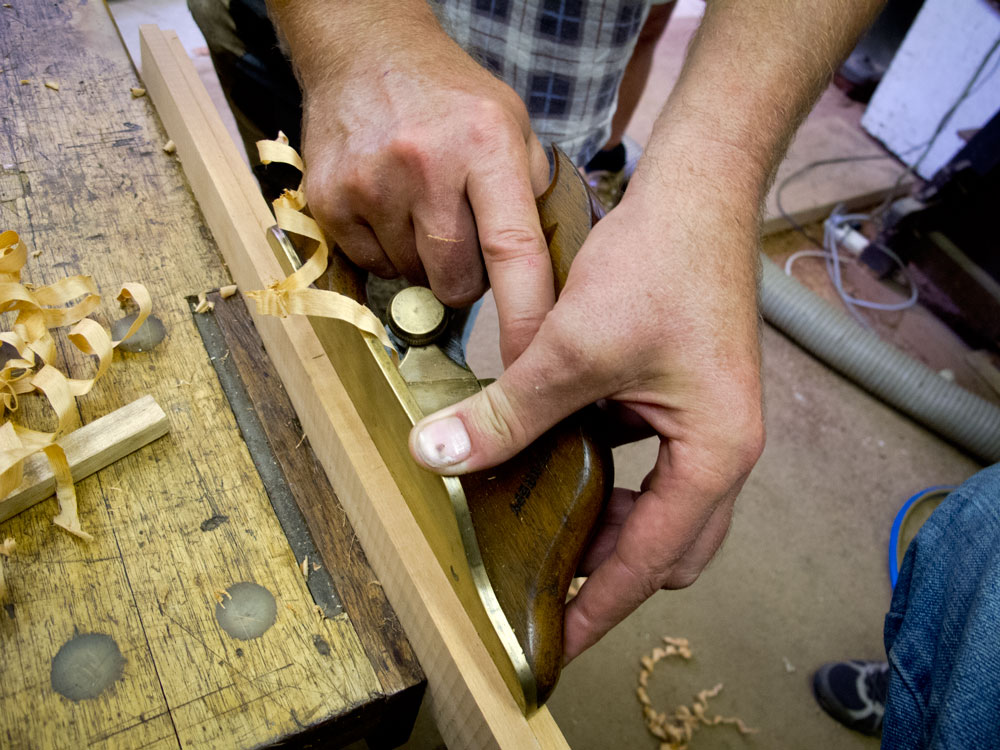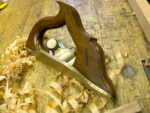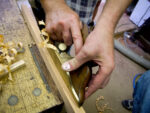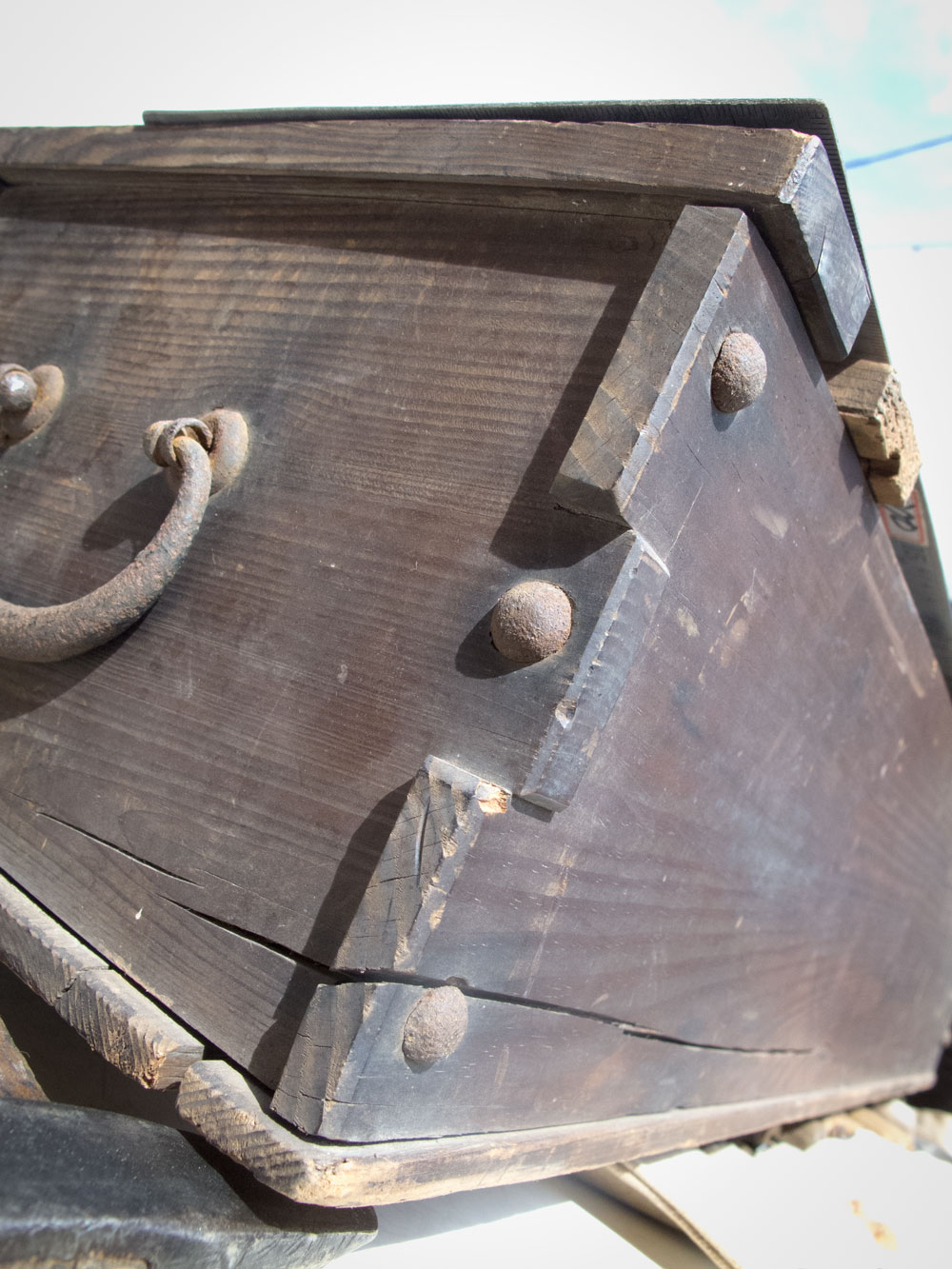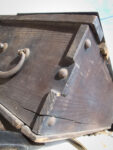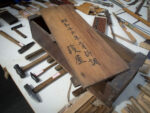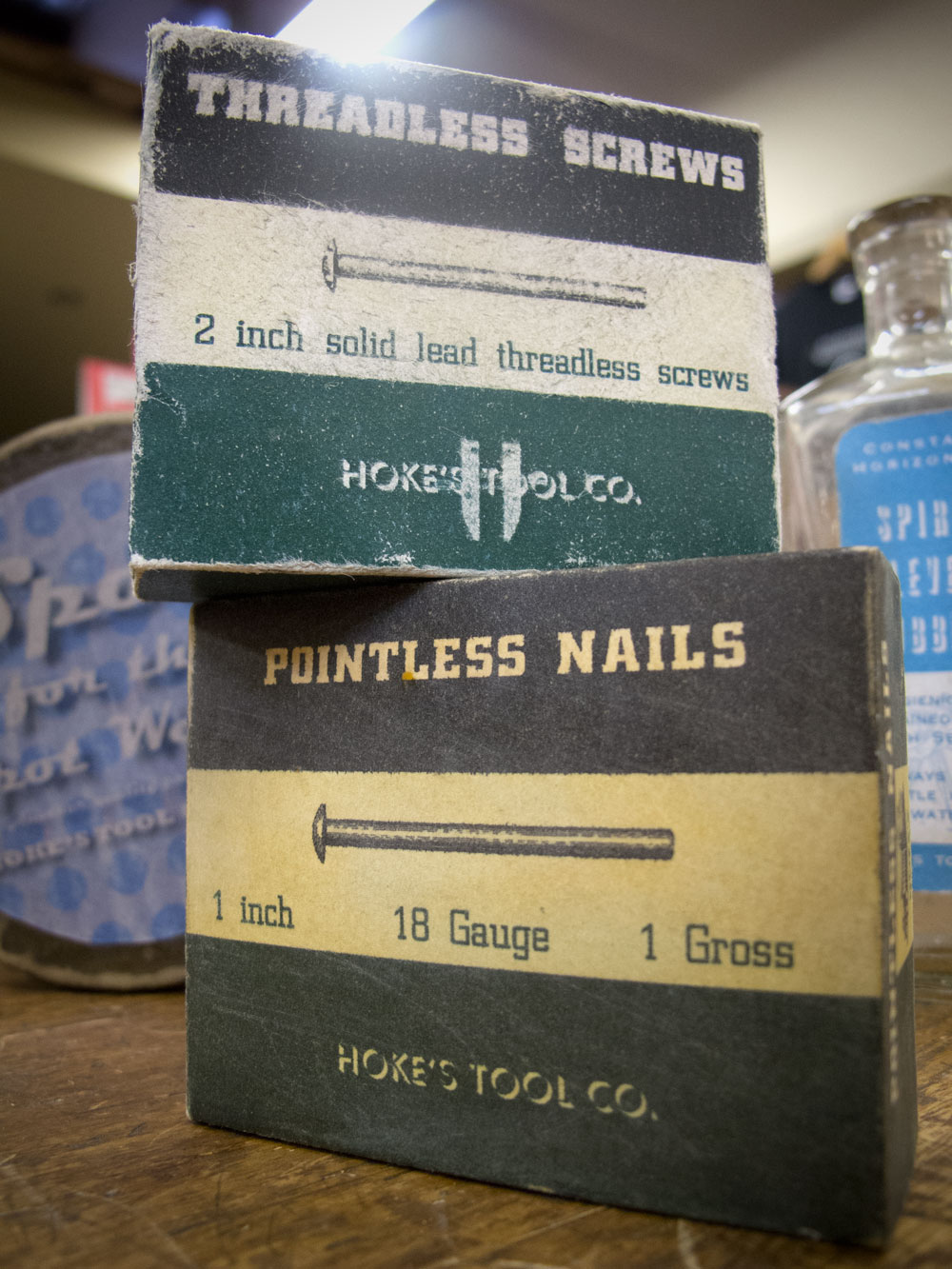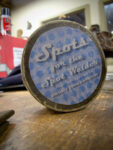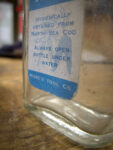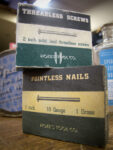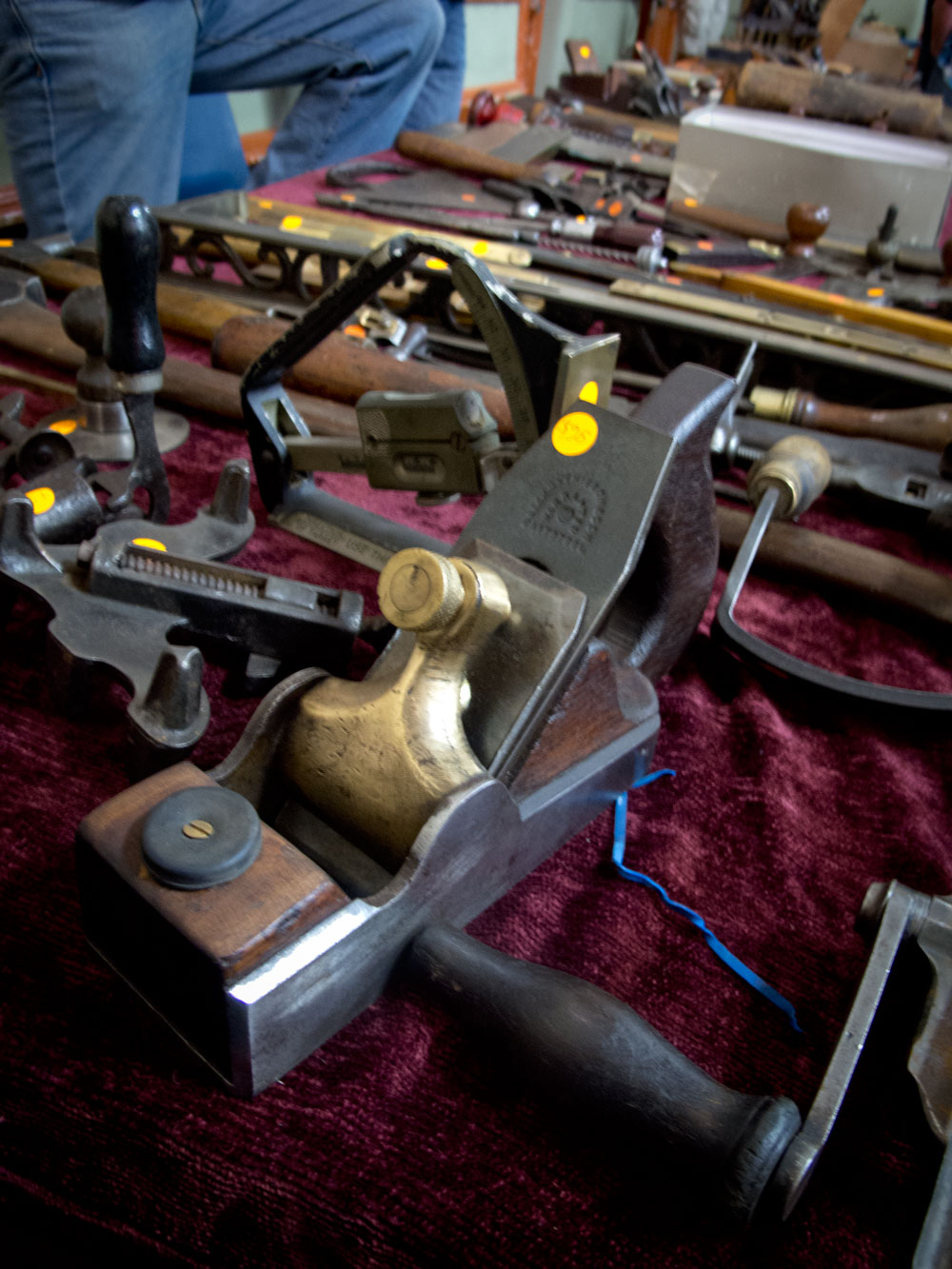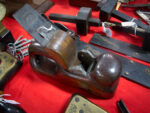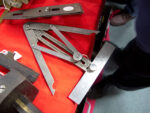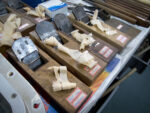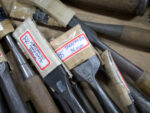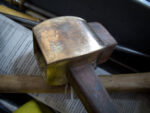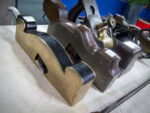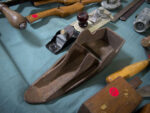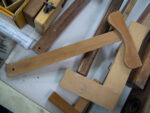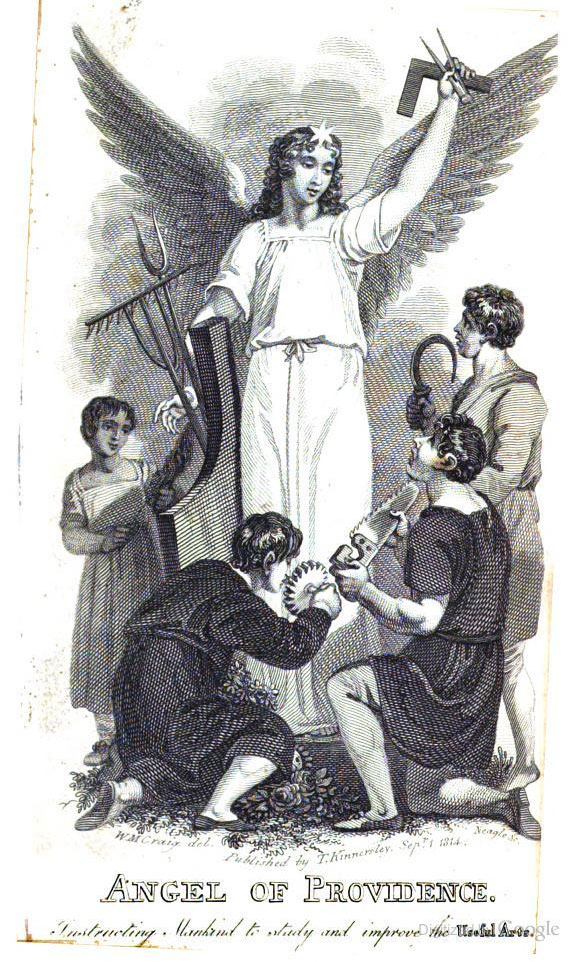While conducting a plane-tuning seminar on Wednesday with toolmaker extraordinaire Chris Vesper, I got the opportunity to pick through his tool collection. I had no idea he was a tool collector. He is. And he has devoted about one-third of his living space to his collection.
His collection of plane irons (and chipbreakers) is remarkable. I could have spent a week examining them. But the tool in his collection that blew my mind was a Lancashire rebate plane he had sharpened and tuned up.
This is a user-made plane. Words and photos really don’t do it justice.
In essence, it is a cast brass rebate plane with a skewed cutter (snecked!). Instead of having a fence below the cutter (like a moving fillister plane), this plane has a sole that extends above the cutter and cutting surface.
This remarkable feature allows you to do several things:
- Cut rabbets of any width by dropping into a gauge line. The more you plane, the more stable the tool becomes. So you can really bear down and remove some meat once you get the tool started.
- Easily alter the floor of a rabbet with a little wrist twist. This allows you to clean up rabbets with ease.
- The tote encourages you to push the sole into the corner of the rabbet and to remain square.
- The escapement/lever cap of the tool throws the shavings onto the bench and not into your hand.
- The brass sole gives you a sharp arris that lets you start in a gauge line.
Vesper was kind enough to let me try the plane out on some King William Pine. I used one of his marking gauges to lay out the rabbet. And within a couple strokes I was a rabbeting fool.
I surmise that this is a tough tool to make. It has a skew cutter, an unusual sole and a wild (but very comfortable tote). So I wouldn’t hold my breath in hopes that someone would make it for the modern market.
But if you see one, drop your small children and watermelons and grab the tool. Buy it. You won’t regret it.
— Christopher Schwarz

